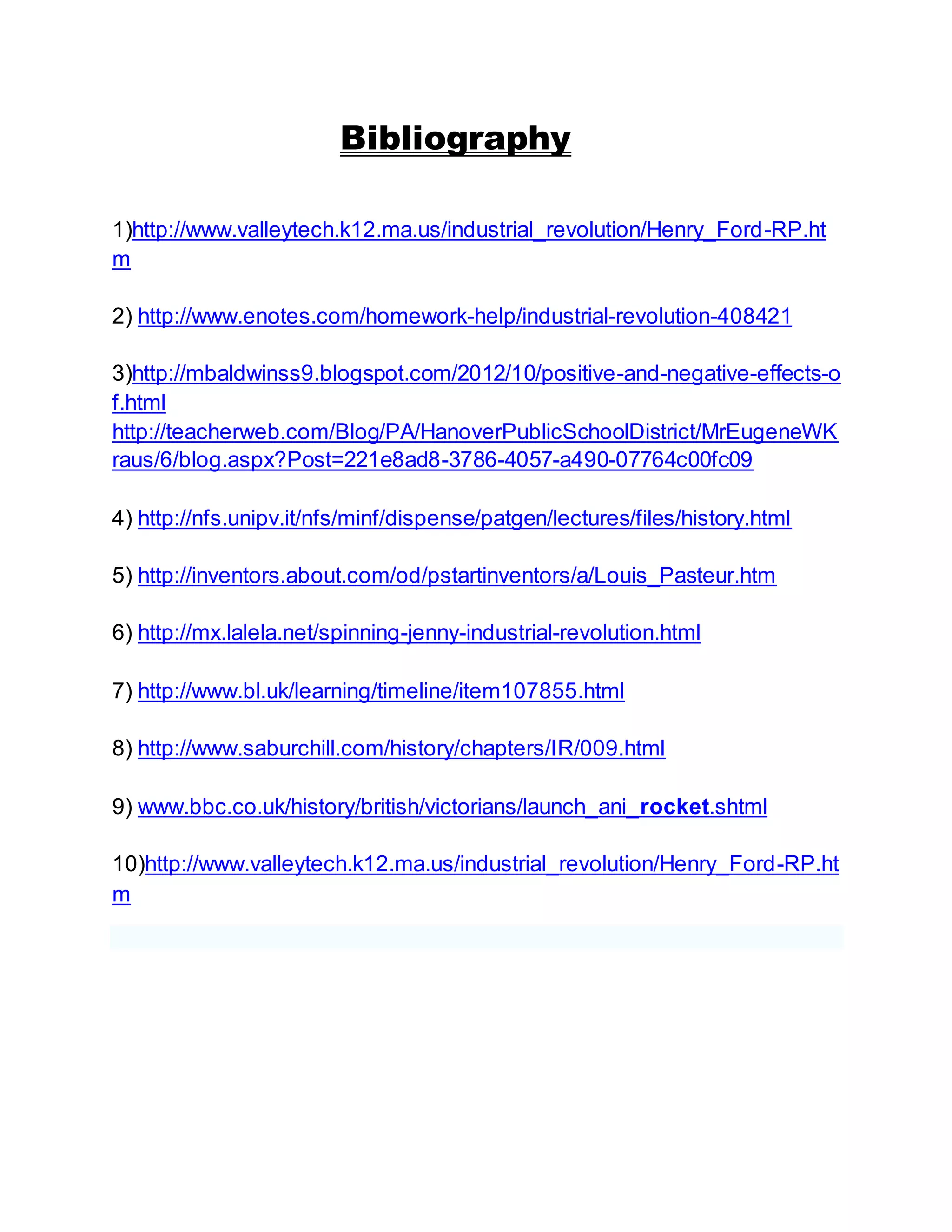The Industrial Revolution, occurring from the 18th to the 19th century, was a transformative period characterized by significant advancements in agriculture, manufacturing, mining, transport, and technology, initially starting in Britain and spreading globally. While it led to increased production and improved living standards for some, it also resulted in dire working conditions for the labor class and environmental degradation. Key inventions, such as the steam engine, significantly impacted transportation and industrial processes, marking this era as a turning point in human history.












